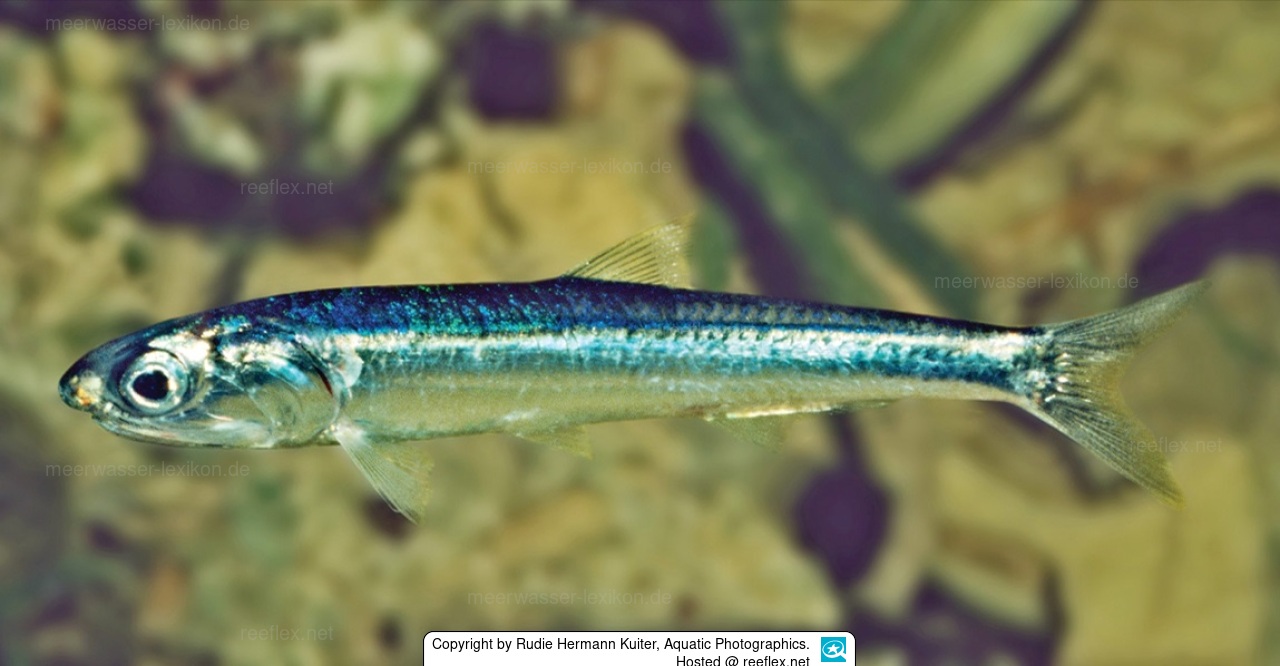Info
The Australian anchovy (Engraulis australis) forms large, dense schools in nearshore and offshore surface waters.
Anchovies are not only of great economic importance throughout their range, they are also on the food list of many fish higher up the food chain (marlin tuna, sailfish, sharks), marine mammals (dolphins and whales), seabirds and penguins.
When anchovies are attacked by predators, they form a bait ball to defend themselves. The small fish form a dense, tight spherical formation to make it difficult for predators to pick out specific individuals and to confuse them.
In addition, the Bait Ball thus appears as a single large animal, which helps irritate enemies.
Despite this protective strategy, the attacks lead to large feeding, which can result in the destruction of an entire swarm.
The body of the Australian anchovy is long and slender and appears slightly compressed, the snout is bluntly rounded and has a very large protruding mouth with jaws that extend well beyond the eyes.
The short dorsal fin is located in the middle of the back, the anterior fin rays much longer than the posterior ones.
The caudal fin is deeply forked. the upper side of the body greenish, while the underside is silvery white.
Along the midline runs a wide silver stripe, the head of the anchovy is silver, the fins are transparent.
Synonyms:
Atherina australis White, 1790
Engraulis antarcticus Castelnau, 1872
Engraulis antipodum Günther, 1868
Engraulis encrasicholus antipodum Günther, 1868
Anchovies are not only of great economic importance throughout their range, they are also on the food list of many fish higher up the food chain (marlin tuna, sailfish, sharks), marine mammals (dolphins and whales), seabirds and penguins.
When anchovies are attacked by predators, they form a bait ball to defend themselves. The small fish form a dense, tight spherical formation to make it difficult for predators to pick out specific individuals and to confuse them.
In addition, the Bait Ball thus appears as a single large animal, which helps irritate enemies.
Despite this protective strategy, the attacks lead to large feeding, which can result in the destruction of an entire swarm.
The body of the Australian anchovy is long and slender and appears slightly compressed, the snout is bluntly rounded and has a very large protruding mouth with jaws that extend well beyond the eyes.
The short dorsal fin is located in the middle of the back, the anterior fin rays much longer than the posterior ones.
The caudal fin is deeply forked. the upper side of the body greenish, while the underside is silvery white.
Along the midline runs a wide silver stripe, the head of the anchovy is silver, the fins are transparent.
Synonyms:
Atherina australis White, 1790
Engraulis antarcticus Castelnau, 1872
Engraulis antipodum Günther, 1868
Engraulis encrasicholus antipodum Günther, 1868







 Rudie Hermann Kuiter, Aquatic Photographics, Australien
Rudie Hermann Kuiter, Aquatic Photographics, Australien





